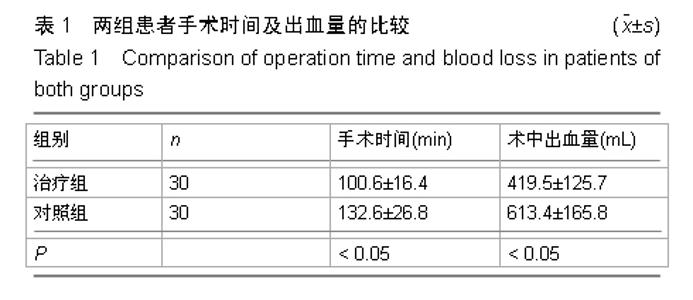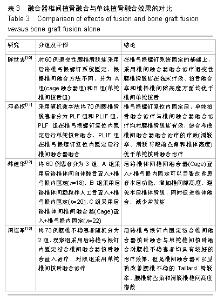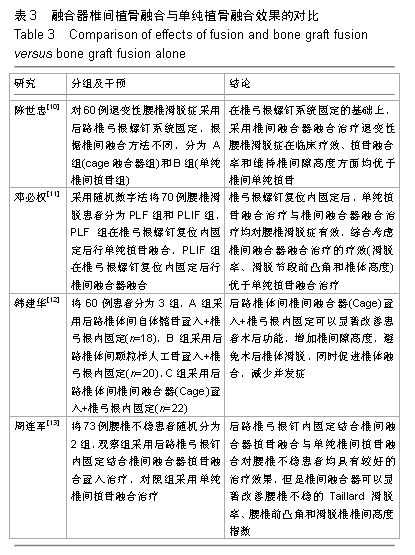| [1] Iguchi T,Kurihara A,Nakayama J,et al.Minimum 10-year outcome of decompressive laminectomy for degenerative lumbar spinal stenosis.Spine (Phila Pa 1976).2000; 25(14): 1754-1759.
[2] 谢光艳.椎弓根螺钉内固定联合椎体间植骨融合治疗退行性腰椎滑脱临床疗效分析[J].医学信息,2015,29(12):168-169.
[3] 苏光辉,方松清,钟华.经后路椎体间植骨融合椎弓根螺钉内固定治疗退行性腰椎滑脱症[J].南华大学学报:医学版,2008,36(4): 470-472.
[4] 申练兵,陈其昕.GSS型椎弓根螺钉系统加椎间自体髂骨植骨融合治疗腰椎滑脱症[J].中国医师进修杂志,2013,36(5):8-10.
[5] 李志军.椎弓根螺钉内固定联合植骨融合治疗退行性腰椎滑脱临床疗效分析[J].中国卫生产业,2014,12(22):181-182,184.
[6] 谢旭垣,孔志强,龙朝仪.椎间与横突间植骨融合治疗腰椎滑脱合并椎管狭窄症的效果分析[J].医学信息,2014,28(37):52.
[7] 谭峰.用椎间植骨融合术与用横突间植骨融合术治疗腰椎滑脱症的临床疗效比较[J].当代医药论丛(下半月),2014,4(3):4-5.
[8] 谢水安,孙世伟,陈秋兰,等.单、双侧后外侧椎弓根钉植入结合植骨融合治疗退变性腰椎滑脱的疗效探讨[J].中外医疗,2014, 34(27):34-35.
[9] 李危石,陈仲强,郭昭庆,等.椎体间植骨融合治疗腰椎滑脱症[J].中国脊柱脊髓杂志,2010,15(1):20-23.
[10] 陈世忠.椎间融合器与单纯椎间植骨法治疗退变性腰椎滑脱症的疗效分析[J].中国骨与关节损伤杂志,2010,25(5):439-440.
[11] 邓必权,胡华,滕宇,等.椎弓根螺钉复位内固定后单纯植骨融合与椎间融合器融合治疗腰椎滑脱症的疗效比较[J].中国老年学杂志,2015,35(7):1823-1825.
[12] 韩建华,孙厚杰,周鑫,等.腰椎退行性滑脱症内固定与不同植骨融合方式的疗效比较[J].中国矫形外科杂志,2014,22(13): 1226- 1230.
[13] 周连军.后路椎弓根内固定结合椎间融合器与单纯椎间植骨融合治疗腰椎不稳的疗效比较[J].实用临床医药杂志,2014, 18(13): 79-80,85.
[14] Parisini P,Di Silvestre M,Greggi T,et al.Circumferential fusion by posterior approach in lumbosacral instability with or without pedicle screw fixation: a comparison of methods.Chir Organi Mov.200186(2):127-142.
[15] Würgler-Hauri CC,Kalbarczyk A,Wiesli M,et al.Dynamic neutralization of the lumbar spine after microsurgical decompression in acquired lumbar spinal stenosis and segmental instability.Spine (Phila Pa 1976).2008;33(3): E66-72.
[16] Christodoulou E,Chinthakunta S,Reddy D,et al.Axial pullout strength comparison of different screw designs: fenestrated screw, dual outer diameter screw and standard pedicle screw. Scoliosis.2015;10:15.
[17] Matsukawa K,Yato Y,Hynes RA,et al.Comparison of Pedicle Screw Fixation Strength among Different Transpedicular Trajectories: A Finite Element Study.J Spinal Disord Tech. 2015. [Epub ahead of print]
[18] Doulgeris JJ,Aghayev K,Gonzalez-Blohm SA,et al. Biomechanical comparison of an interspinous fusion device and bilateral pedicle screw system as additional fixation for lateral lumbar interbody fusion.Clin Biomech (Bristol, Avon). 2015;30(2):205-210.
[19] Miyakoshi N,Hongo M,Kobayashi T,et al.Comparison between Bilateral C2 Pedicle Screwing and Unilateral C2 Pedicle Screwing, Combined with Contralateral C2 Laminar Screwing, for Atlantoaxial Posterior Fixation.Asian Spine J. 2014;8(6):777-785.
[20] Villavicencio AT,Serxner BJ,Mason A,et al.Unilateral and bilateral pedicle screw fixation in transforaminal lumbar interbody fusion: radiographic and clinical analysis.World Neurosurg.2015;83(4):553-559.
[21] Xiao SW,Jiang H,Yang LJ,et al.Comparison of unilateral versus bilateral pedicle screw fixation with cage fusion in degenerative lumbar diseases: a meta-analysis.Eur Spine J. 2015;24(4):764-774.
[22] Yang X,Wang H,Zhao Q,et al.A comparison of unilateral and bilateral pedicle screw fixation combined with transforaminal lumbar interbody fusion for lumbar degenerative diseases. Chin Med J (Engl).2014;127(20):3592-3596. |





